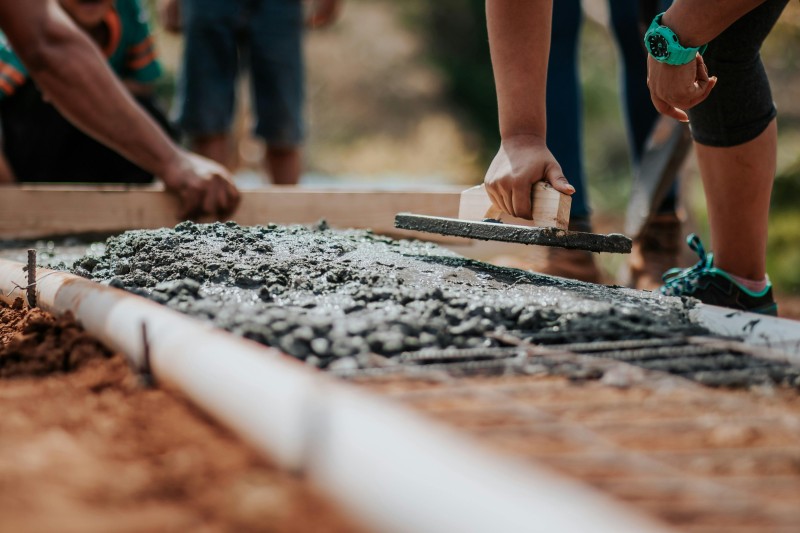So, let’s kick things off with a burning question—what in the world is passive radiative cooling? Imagine you’re lounging by the pool on a hot summer day, sipping your favorite drink (perhaps a piña colada?), and you suddenly feel an inexplicable chill. No, it’s not the ghost of summers past; it’s actually the magic of passive radiative cooling at work! This process allows buildings to cool down without relying on traditional air conditioning systems. It’s like your house decided to go on a diet and shed those extra energy pounds!
But how does this all work? Well, passive radiative cooling involves materials that can emit thermal radiation effectively. In simpler terms, these materials release heat into the atmosphere during the night, allowing your home to stay cooler during those scorching daytime hours. Sounds like a superhero power for buildings, right?
Let’s dive deeper into the science behind this phenomenon! Picture yourself in a cozy blanket on a cold winter night—feels nice, doesn’t it? Now think about how that warmth escapes into the chilly air around you. Passive radiative cooling operates similarly! When certain materials absorb sunlight during the day and then release that heat at night, they create a temperature difference that can keep your space feeling fresh.

Now here comes the fun part—if you were to wear reflective sunglasses while sunbathing (because who wants to look too cool while getting tan?), you’d notice how much cooler you feel. That’s because reflective surfaces bounce back sunlight instead of absorbing it. Similarly, passive radiative cooling uses special coatings or materials that are highly emissive in infrared wavelengths to ensure maximum heat loss when temperatures drop.
Alright folks, let’s talk benefits! Who doesn’t love saving money while being environmentally friendly? With passive radiative cooling systems in place, homeowners can significantly reduce their reliance on energy-guzzling air conditioners. We’re talking about lower electricity bills and fewer carbon emissions—who knew being eco-conscious could be so financially savvy?
Plus, think about all those times you've sweat buckets just waiting for your A/C to kick in after returning home from work! With passive radiative cooling strategies implemented in your building design or renovation plans, you'll enjoy immediate relief without having to wait for technology to catch up!
Common Applications of Passive Radiative Cooling: Where Can You Use It?
You might be wondering where exactly can we harness this magical power of passive radiative cooling? Well my friends, let me tell you—it’s everywhere! From residential homes looking for innovative ways to beat the heat without breaking the bank to commercial buildings aiming for LEED certification (that fancy green badge), there are countless applications.
Think rooftops designed with special coatings or even entire walls made from advanced materials engineered specifically for this purpose. Imagine living in a house where every room feels like an oasis while Mother Nature gives you high-fives!
Passive Radiative Cooling Technology| Technology Type | Key Features | Applications |
|---|
| Radiative Cooling Coatings | High solar reflectance, low thermal emittance | Building rooftops, facades |
| Phase Change Materials | Absorb and release heat during phase transitions | Insulation, wall panels |
Challenges of Implementing Passive Radiative Cooling: Is It All Sunshine and Rainbows?
Now hold onto your hats because we need to address some challenges too! While passive radiative cooling sounds fantastic—and trust me it really is—you might run into hurdles along the way. For starters, it requires careful planning and design considerations.
And if you're thinking about just slapping some reflective paint on your roof and calling it a day... well let’s just say that's not quite how it works! You’ll need experts who understand material properties as well as local climate conditions so that everything aligns perfectly.
Sustainability Consultant's Perspective on Passive Radiative Cooling
As far as I know, sustainability consultants are buzzing about passive radiative cooling these days! They see it as a game-changer for reducing energy consumption in buildings. By integrating such innovative cooling solutions into architectural designs, we can dramatically lower our carbon footprint while ensuring comfort for occupants. It’s like hitting two birds with one stone—saving energy and maintaining a pleasant indoor environment.
Moreover, these consultants emphasize the importance of educating clients about energy-saving strategies that include passive radiative cooling technologies. They advocate for using materials that not only support this cooling method but also enhance overall building efficiency. The industry is moving towards embracing these sustainable practices as they align perfectly with global targets for reducing greenhouse gas emissions.
Passive Radiative Cooling and Energy Efficiency in Building Design
Now let’s think about how passive radiative cooling ties into energy efficiency in building design. This relationship is crucial because effective building designs must prioritize both comfort and sustainability. When architects incorporate passive radiative cooling principles into their designs—like using reflective materials or optimizing natural ventilation—they create spaces that require less energy to maintain comfortable temperatures.
This synergy between passive cooling techniques and energy efficiency leads to reduced operational costs over time. Homeowners and businesses alike can benefit from lower utility bills while contributing positively to environmental conservation efforts. It’s truly a win-win situation!
Conclusion: The Future Looks Cool with Passive Radiative Cooling!
In conclusion folks—the future indeed looks bright (and cool) with passive radiative cooling leading us toward smarter building solutions! By embracing these innovative technologies today we pave our way towards sustainable living tomorrow.
So why not consider incorporating them into your next renovation project or dream home build? After all wouldn’t you want everyone asking how come your place stays so refreshingly chill even during peak summer heat? Let’s give Mother Earth some love through effective designs that utilize nature's gifts—after all she deserves our best efforts!
This article is edited by Xiao Ke, created by Jiasou TideFlow AI SEO